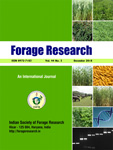SEVA NAYAK DHEERAVATHU, SRINIVAS. A*, SRAVANTHI G., THULASI BAI VADITHE, KETHAVATH MADHUDEEPIKA AND SAIDA NAIK VADITHE
Indian Institute of Millets Research, Hyderabad-500 030 (Telangana), India
Department of Crop Physiology, Agricultural College, Bapatla (ANGRAU)
ANGRAU-Agricultural Research Station, Jangameswarapuram, Guntur (Andhra Pradesh), India
*(e-mail: srinivas@millets.res.in)
(Received: 2 June 2025; Accepted: 29 June 2025)
SUMMARY
Millets are resilient, climate-smart crops with short growing seasons and low input requirements, making them ideal for smallholder and marginal farmers. Cultivating and processing millets, along with value addition technologies, can significantly improve farmers’ incomes, nutritional security, and rural employment. Millet processing and value addition technologies have emerged as pivotal solutions in promoting sustainable agriculture and enhancing the economic viability of millet growers. The establishment of primary millet processing units involves the integration of advanced machinery such as graders-cum-aspirators, destoners, dehullers, and milling machines. These technologies facilitate cleaning, grading, and dehulling processes, improving the quality, shelf life, and marketability of millet products while reducing labor intensity and post-harvest losses. Value- added products—including baked goods, extruded snacks, fermented dishes, pasta, noodles, flakes, and puffed millets—have gained prominence by aligning with modern dietary trends. Innovations in baking, extrusion, and fermentation techniques, complemented by suitable packaging solutions, enhance both product appeal and nutritional value. Despite challenges such as impurities, pest infestations, and high moisture content, village-level processing setups have provided scalable models for economic empowerment, reduced dependency on intermediaries, and improved nutritional security. By integrating the agronomical and physiological traditional with modern processing techniques, millet value chains and business opportunities can achieve a transformative impact on farmer incomes, consumer health, and rural livelihoods.
Key words: Business opportunities, major and minor millets, processing, value addition, technology

